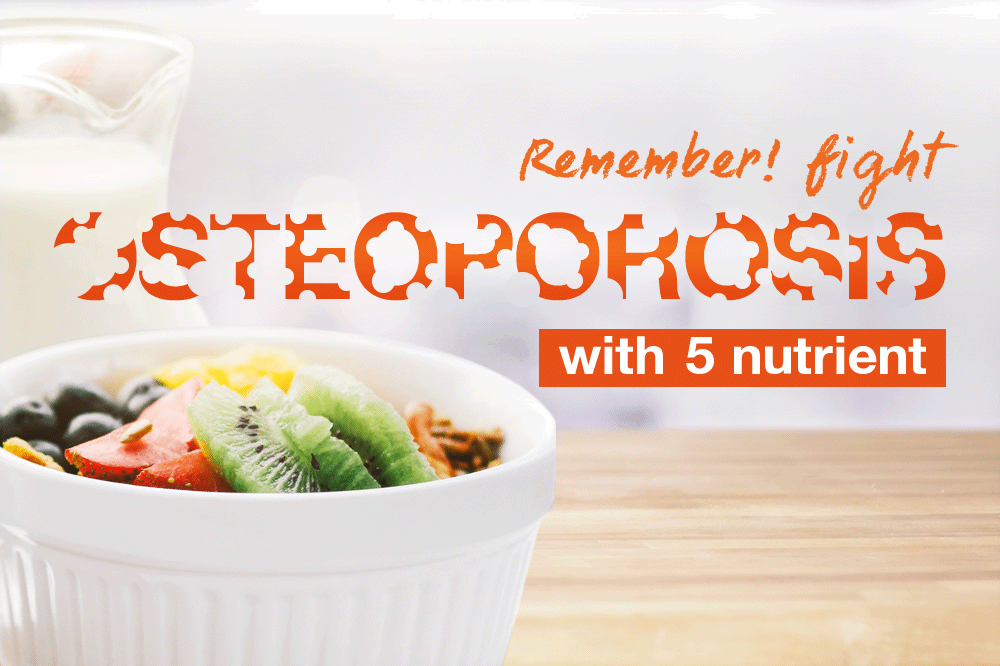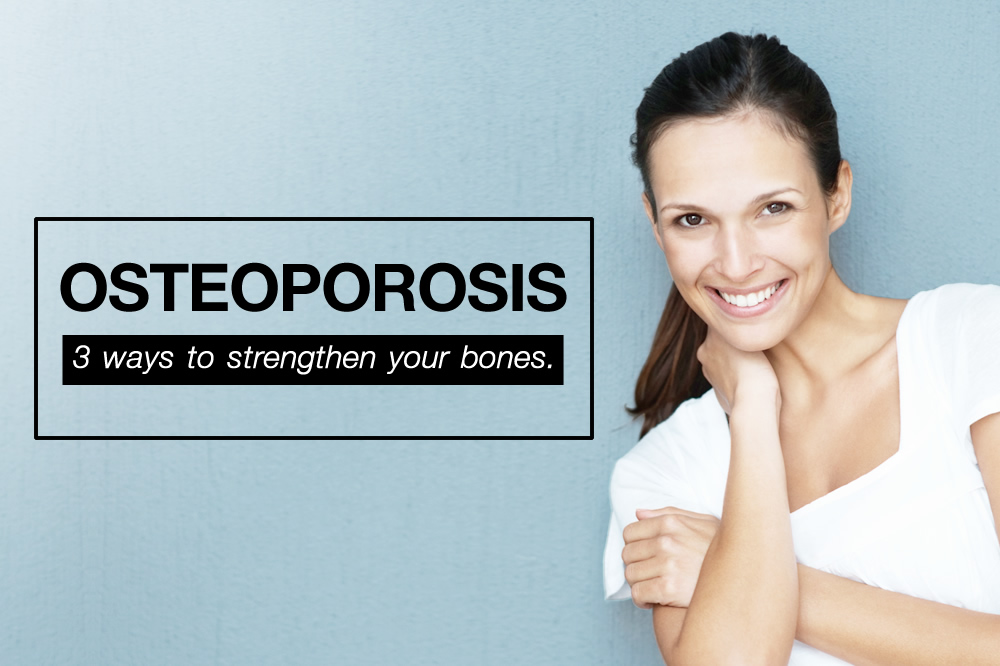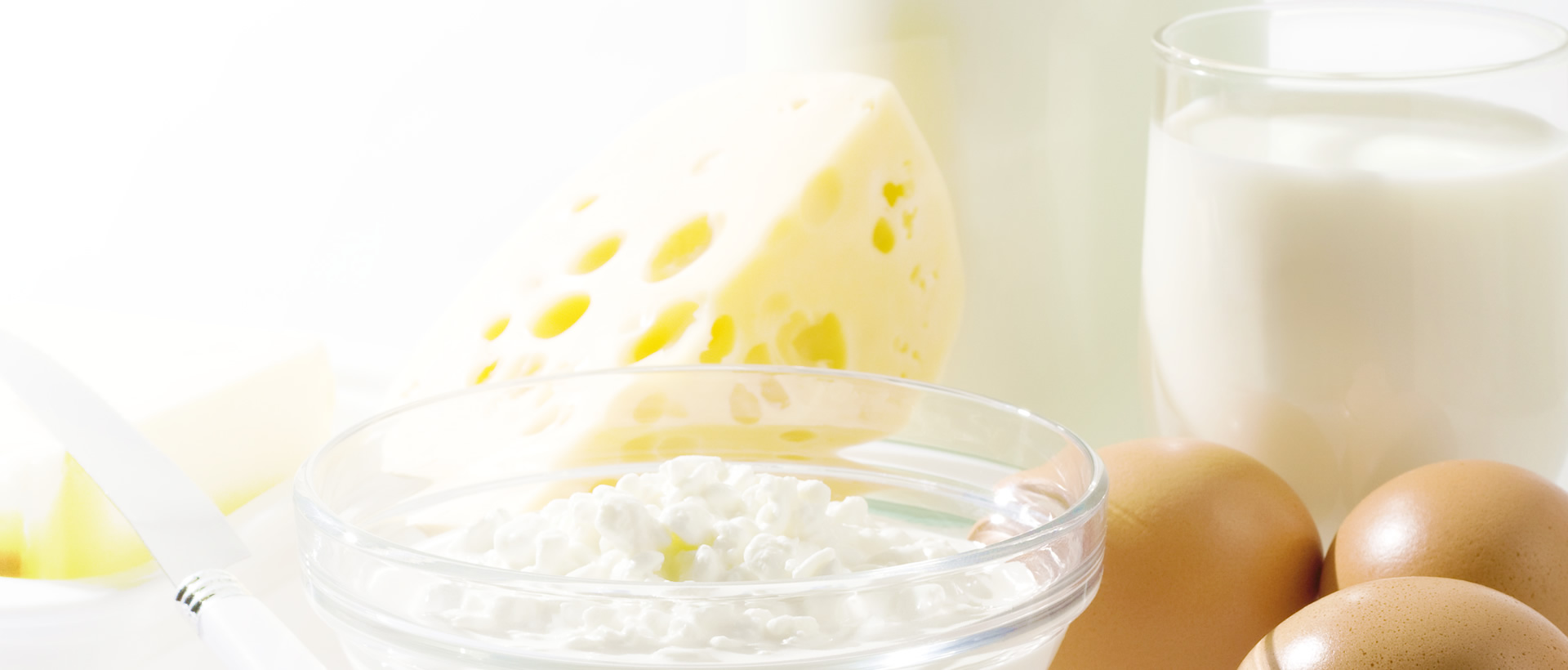Personal trainer and nutritionist Andrew Cate offers a simple exercise, food and lifestyle plan for lowering the condition's impact, and helping you live life to the full.
Once diagnosed with osteoporosis, the key is to focus on maintaining your existing bone mass and slowing down the rate bone loss. You can do this through:
- gentle exercise
- eating a healthy, nutrient rich diet (high in calcium and vitamin D)
- actively preventing fractures and falls
Gentle exercise
Physical activity that increases muscle strength and improves posture and flexibility can slow further bone loss and help prevent injury. Weight bearing exercise such as walking is also recommended for the treatment of osteoporosis. The physical forces placed on your bones by moving muscles helps to improve bone strength.
When your bones feel a consistent 'strain' (as happens in regular exercise) they respond by increasing bone mass to be better prepared for future activity. Everyday activities do not produce enough 'strain' to change bone mass.
For maximum safety, avoid exercises with excessive bending, twisting, jarring and jerky movements that place extra stress on your spine. People with advanced osteoporosis may need to rely on low impact water-based activities such as swimming and hydrotherapy as their exercise of choice.
No matter what stage of your osteoporosis, consult your doctor or specialist before starting an exercise program.
Eat a healthy, nutrient rich diet
It's important to eat a wide variety of foods to supply all the nutrients that are vital for bone health. While calcium and vitamin D are well-known, other nutrients such as vitamin C, magnesium and zinc all play an important a role in bone health.
Calcium - the main component in bones, and is the mineral that gives your bones strength. It is found in dairy foods, eggs, almonds and sardines.
Vitamin D – helps your body absorb calcium, and is found in oily fish, liver and milk products. It is also produced beneath the skin when you are exposed to sunlight. Aim for 5–10 minutes outside three times a week without sun cream.
Vitamin C - helps build up collagen, and is found in brightly coloured fruits and vegetables such as red capsicum, tomatoes and sweet potatoes.
Magnesium - helps your body absorb calcium, vitamin C and D, and is found in green vegetables, milk, meat, whole grains and seafood.
Zinc – helps your body absorb calcium, and is found in mushrooms, pumpkin seeds, seafood, oysters and eggs.
There are also foods which restrict or even prevent the absorption of calcium, including:
- soft drink
- excessive protein
- salt
- caffeine
- excessive bran
- alcohol
Prevent fractures and falls
- Because osteoporosis weakens your bones, it's important to take active steps to prevent fractures:
- always practise good posture when sitting or standing
- practise safe lifting techniques, using your legs and a straight back
- avoid lifting any heavy objects
- use rubber mats on bathroom and laundry floors to prevent slipping
- make sure you have good lighting, and create a clutter free environment to reduce trip hazards
Are calcium supplements necessary?
From the age of 40, taking calcium supplements has some proven benefits. A 2007 study on over 63,000 people found that taking calcium supplements reduced the rate of bone loss and decreased the risk of fractures by up to 20 percent.
It was determined that a daily dose of 1200mg of calcium combined with 800 international units of vitamin D provided the most benefit. Calcium supplements can be of particular benefit to people who find it difficult to obtain all the calcium they need from food, such as people with a milk allergy, lactose intolerance or a very low appetite.




















































